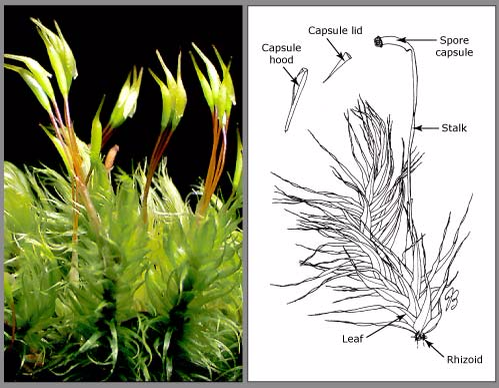TOPIC 1: CLASSIFICATION OF LIVING THINGS ~ BIOLOGY FORM 2
CLASSIFICATION OF LIVING THINGS
Kingdom Fungi
General features of kingdom fungi
They have chitin in their cell wall
They have septate
Phyla of the kingdom fungi
- Ascomycota
- Zygomycota
- Basidiomycota
- Reproduce sexually by means of ascospores
The Structure of Mosses
Describe the structure of mosses
Mosses are small, softplantscalledbryophytes, that are typically 1–10 cm (0.4–4 in) tall, though some species are much larger. They commonly grow close together in clumps or mats in damp or shady locations. They do not haveflowersorseeds, and their simple leaves cover the thin wiry stems. At certain times mosses produce spore capsules which may appear as beak-like capsules borne aloft on thin stalks.
Division Filicinophyta (Pteridophyta)
This division was formerly called Pteridophyta. The division Filicinpphyta includes a group ofprimitive vascular plants. The adult plant body in these plants is a sporophyte. It showsdifferentiation into true roots, stems and leaves. The stem is mostly herbaceous. Leaves may besmaller or larger. Vascular tissues are present in all the vegetative parts of the plant body.
Characteristics of division Filicinophyta
Reproduction involves production of spores inside special structures called sporangia which occur on the underside of the leaves called prophylls. Sporangia may sometimes be found in groups called sori.
The plants may be zoosporous – producing only one type of spore or heterosporous -producing two different types of spores; smaller microspores and larger megaspores.
They are seedless vascular plants, which contain vascular tissues but do not produce seeds.
The Structure of Ferns
Describe the structure of Ferns
Roots are formed from the rhizomes or sometimes from the stipe. The roots usually do not divide once they grow from the rhizome. Tree fern roots grow down from the crown and help thicken and strengthen the trunk. The roots anchor the plant to the ground and absorb water and minerals.





















Leave a Reply